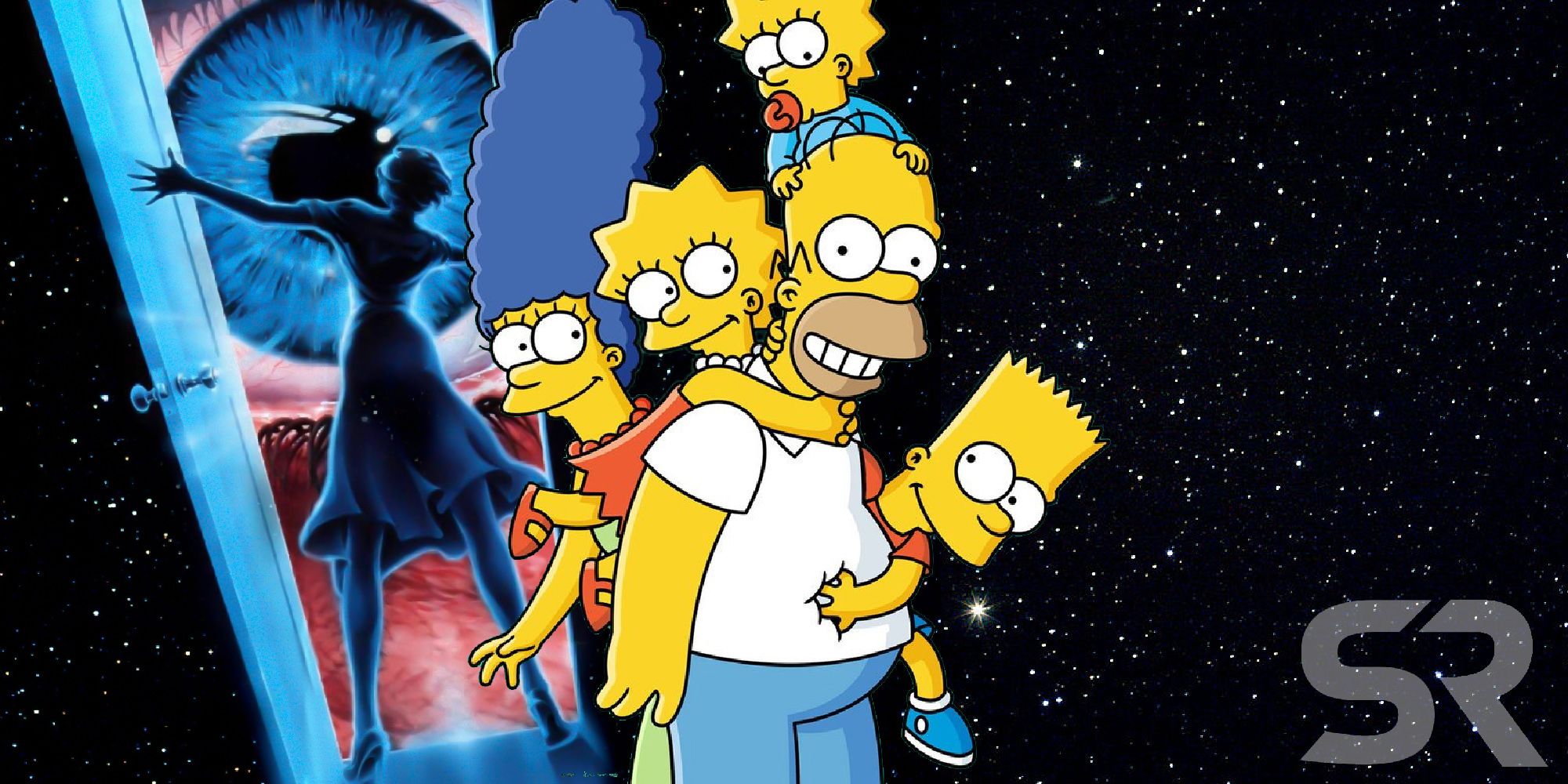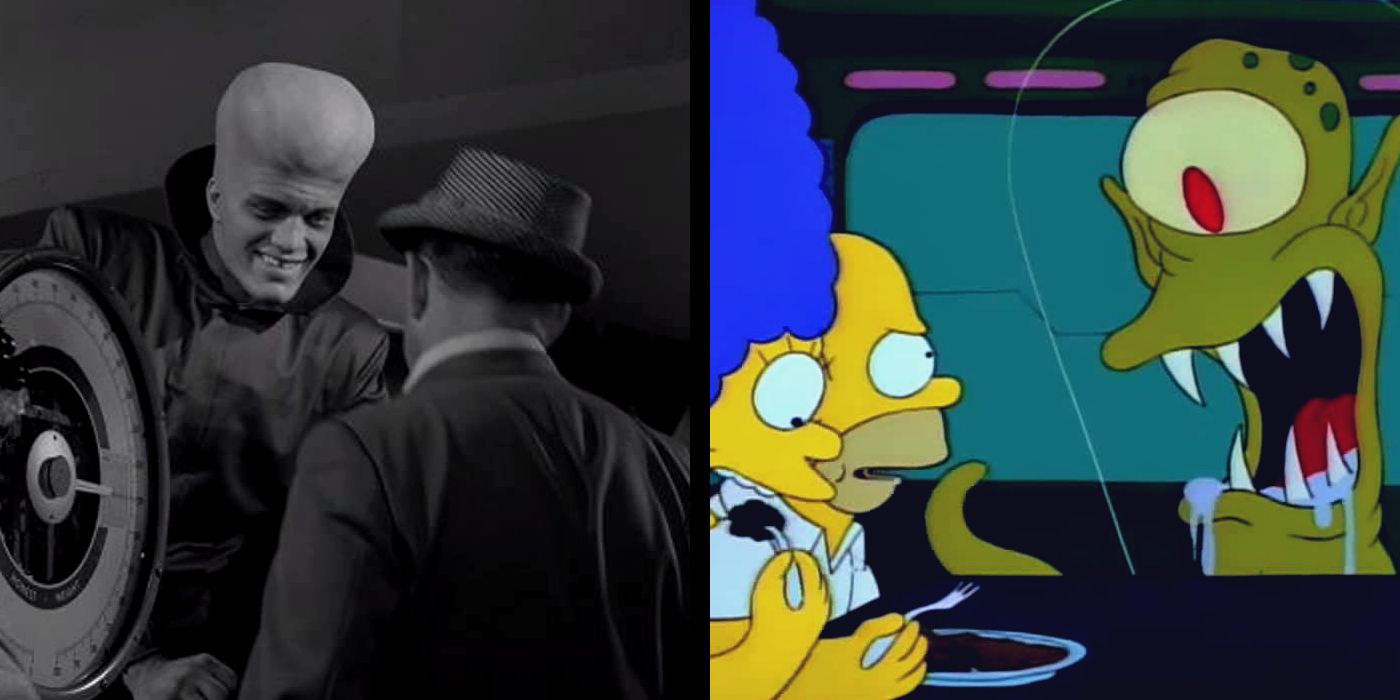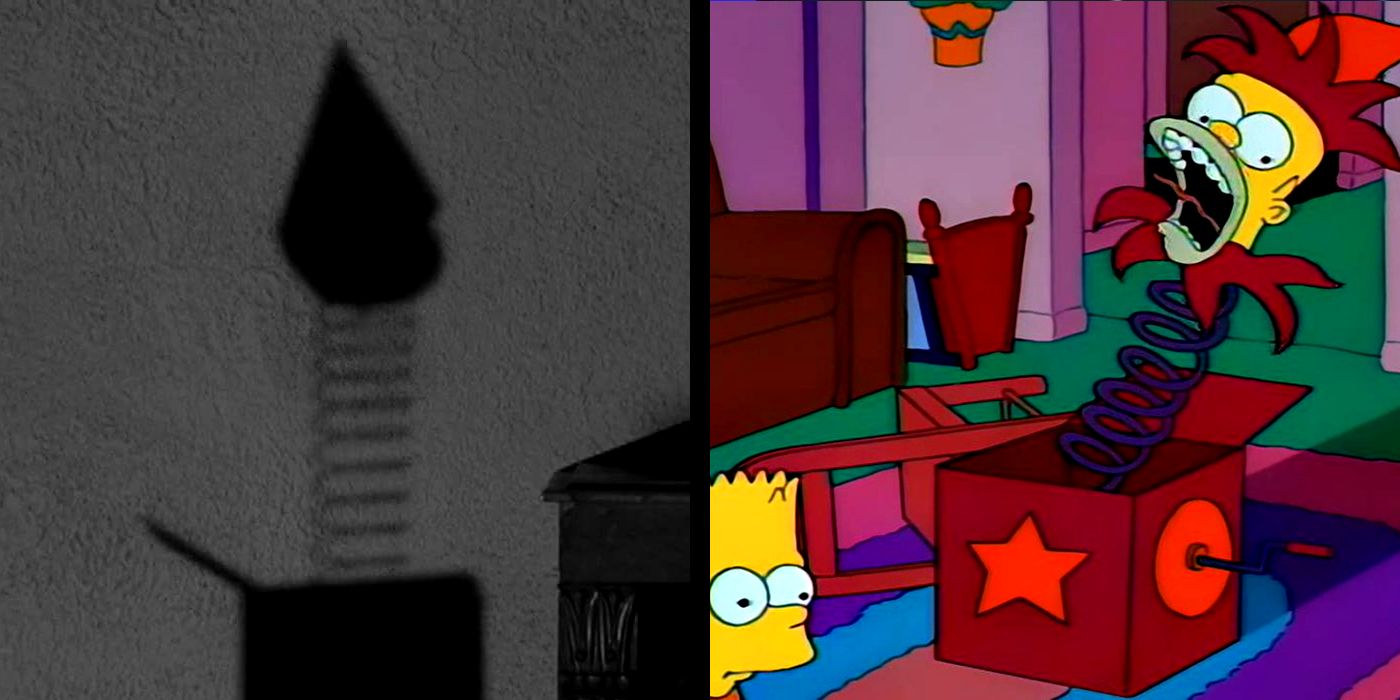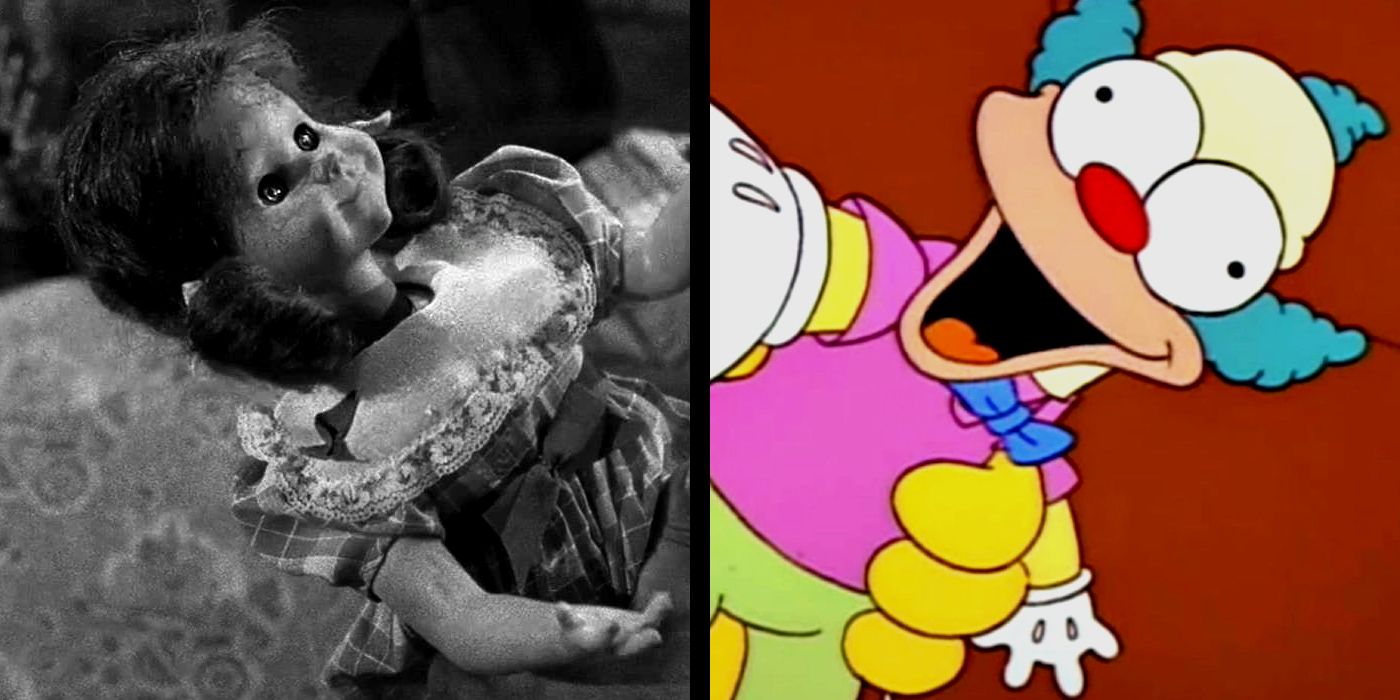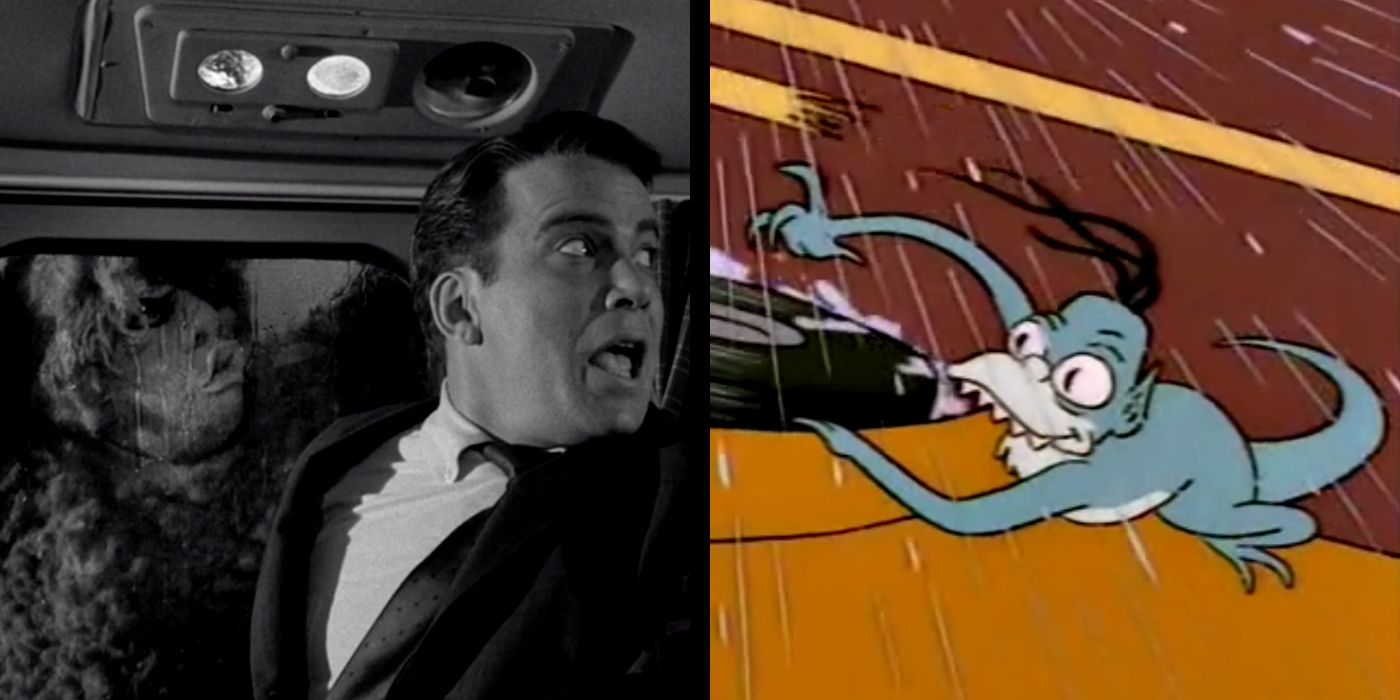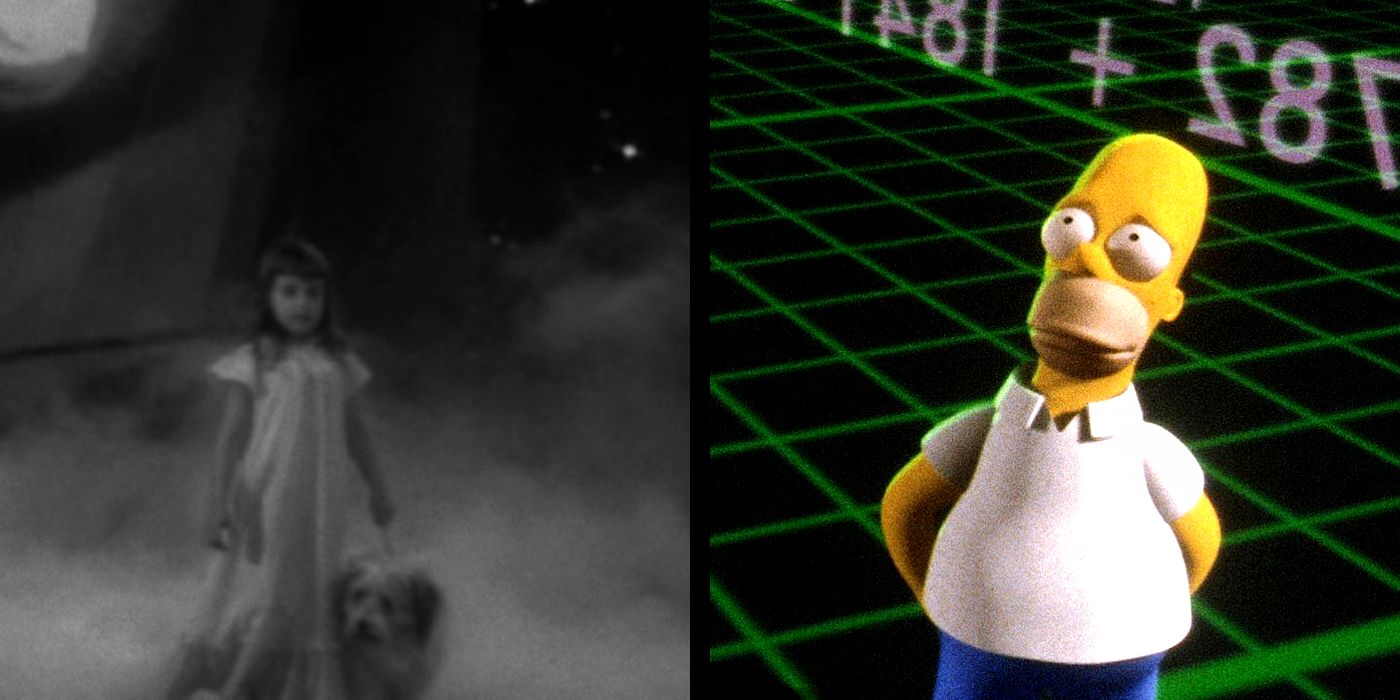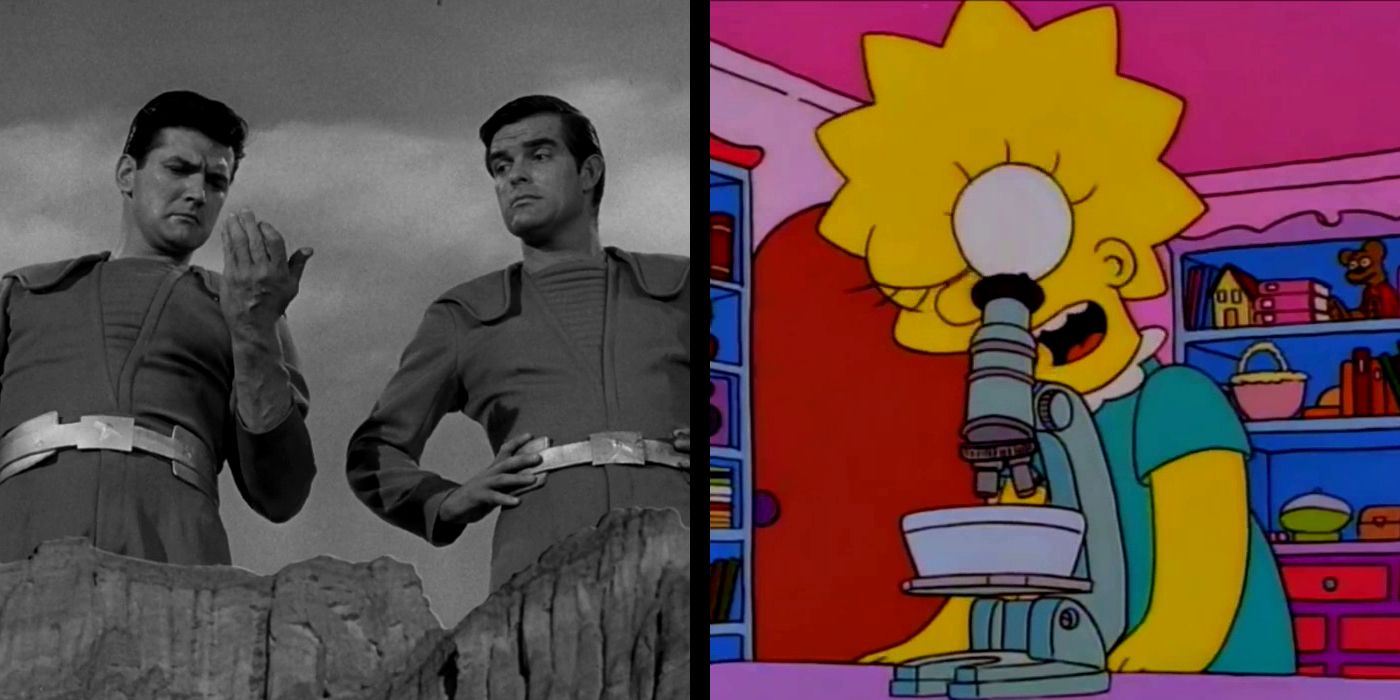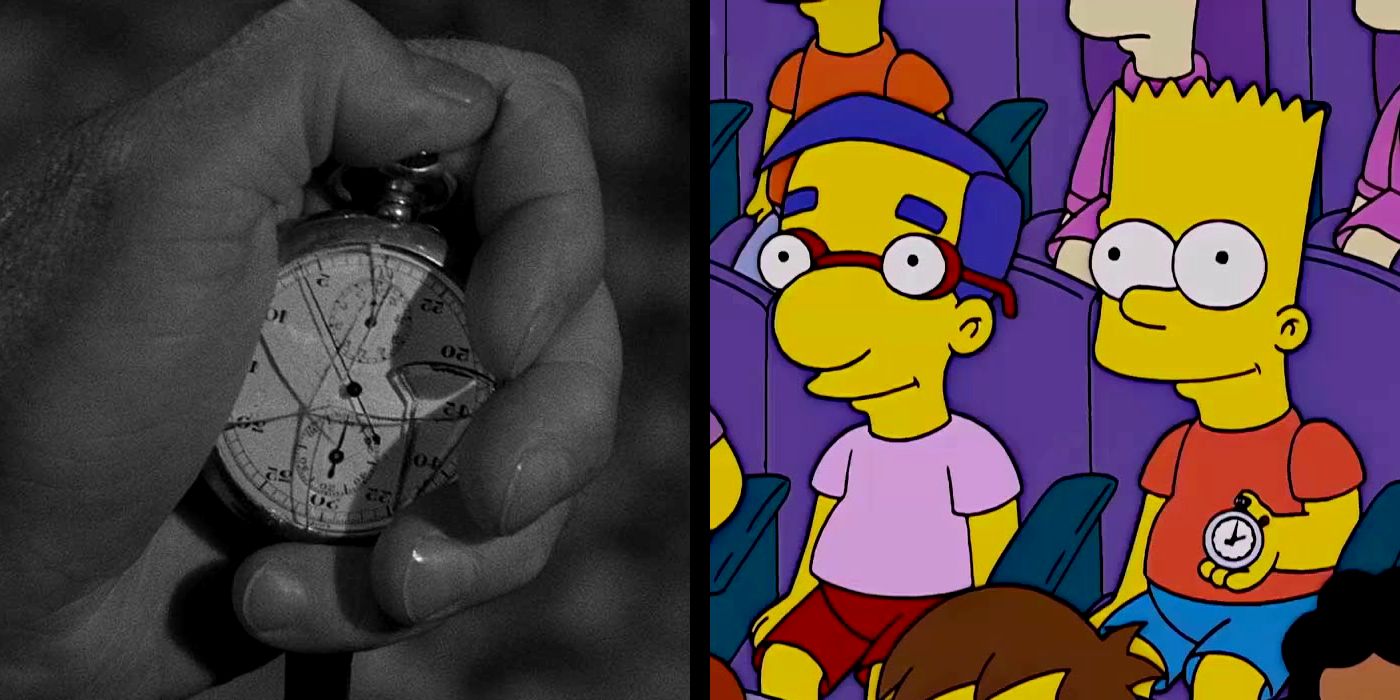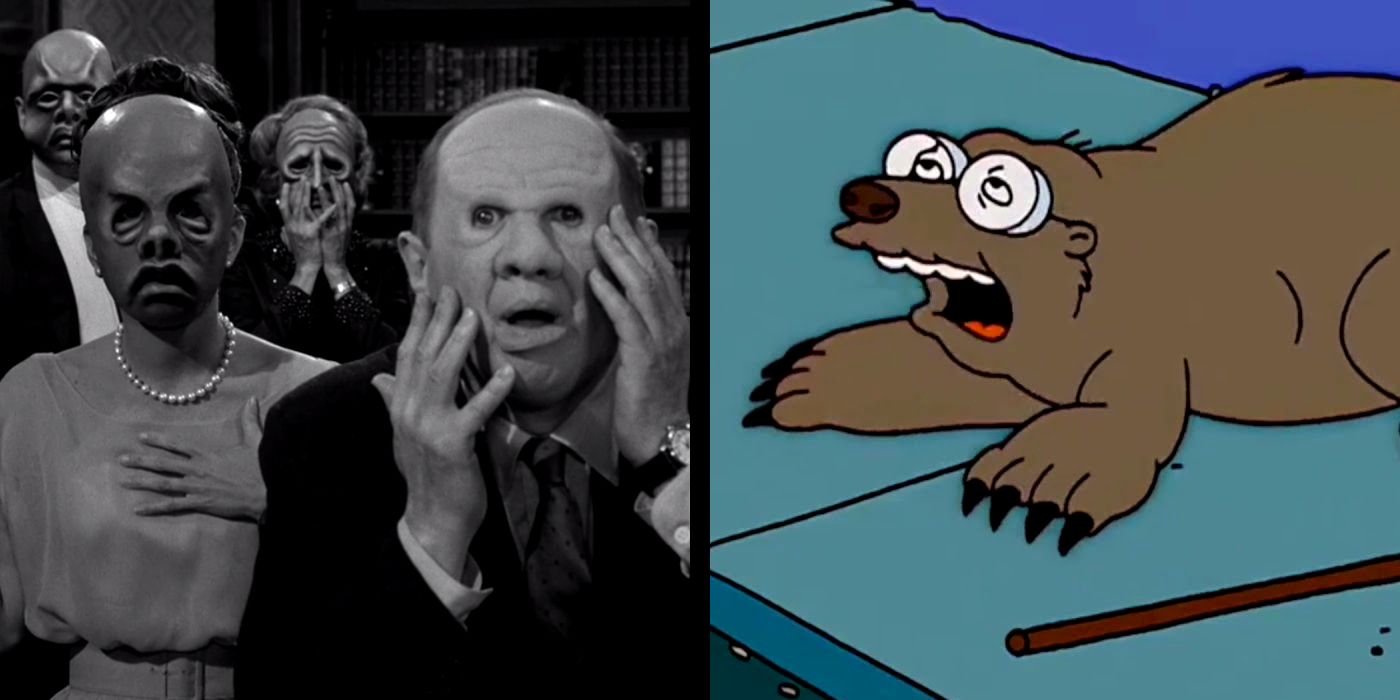A number of The Simpsons' “Treehouse of Horror” segments are based on classic Twilight Zone episodes: here’s every parody explained. Since the first special aired in 1990, “Treehouse of Horror” has become a Halloween tradition, launching The Simpsons into an anthology format for one magnificent night a year - delivering many of the show’s highest highs, and parodying all-manner of horror properties in the process.
Anthology shows stretch back to the early days of television, popular in their time, with The Twilight Zone (1959-1964) often recognized as the very best that the format has to offer. Sure, more nuanced programs have been developed in its wake (Black Mirror being the most popular, and Inside No. 9 the most criminally underseen), but the genius of Twilight Zone creator Rod Serling is undeniable: serving high-concept, stand-alone stories with a twist.
Naturally, when crafting their own anthology specials, The Simpsons sought to parody the best in the game - riffing, to date, on eight different episodes from the classic Twilight Zone run. Here, submitted for your approval, is every one of those parodies.
To Serve Man/Hungry Are The Damned
“To Serve Man” (season 3, episode 24) is one of the most iconic episodes of The Twilight Zone, telling a first-contact tale wherein aliens arrive on Earth, purporting to benefit mankind, and proffer a book written in their language. A group of cryptographers determine that the book is titled ‘To Serve Man’, confirming the aliens’ MO. In a final twist, they discover that the book is, in fact, a cookbook (‘to serve’ having a double meaning), and the aliens intend to eat the human race. It’s a killer twist, for sure, but the rest of the episode is pretty uninspired, bordering on downright dull.
There are also problematic undertones, with the message essentially boiling down to ‘don’t trust beings that are different to you’. It’s a naive stance, at best, and largely xenophobic - qualities that The Simpsons parodies in “Hungry are the Damned” from “Treehouse of Horror” (season 2, episode 3). Marking the first appearance of fan-favorite aliens Kang and Kodos, the segment sees the pair abduct the Simpsons, intent on bringing them to a glorious feast on their home planet. Suspicious, Lisa discovers a book called ‘How To Cook Humans’ and confronts the aliens. The book, however, is covered in space dust and - when the aliens blow it away - a new title is revealed: ‘How To Cook FOR Humans’. Lisa blows: ‘How To Cook FORTY Humans’; then the aliens: ‘How To Cook FOR Forty Humans’. It’s a hilarious subversion of the original twist, conveying (arguably) a stronger message, and the segment ends with Kang and Kodos returning the Simpsons to Earth - hurt that Lisa doubted their kind motivations.
It’s A Good Life/Bart’s Nightmare
Another iconic Twilight Zone episode, “It’s A Good Life” (season 3, episode 8) is about a young boy with psychic powers who holds his family under a godlike thrall - isolating their town from the rest of the world, and committing a number of sinister acts. Able to read minds, he knows when his family are thinking ‘bad’ thoughts, and punishes any transgressions through supernatural means - most notably, turning their friend into a jack-in-the-box. While enjoyable, it lacks a satisfying ending (more of a situation than a story), with the boy remaining in power and little to no change occurring - something that The Simpsons rectifies with its parody, “Bart’s Nightmare” from “Treehouse of Horror II” (season 3, episode 7).
Bestowed with psychic powers, Bart holds Springfield in a grip of fear. When Homer attempts to end his son’s tyranny, Bart turns him into a jack-in-the-box. Marge takes Bart to see therapist Dr. Marvin Monroe, who explains that Bart’s outbursts stem from a lack of attention from his father. This causes Homer to spend more time with him, and the segment ends with Bart returning Homer to his natural form - the pair having bonded. Bart wakes up, screaming, and the whole ordeal turns out to be a candy-fuelled nightmare: sentimental and amusing in equal measure.
Living Doll/Clown Without Pity
“Living Doll” (season 5, episode 6) is one of The Twilight Zone’s best episodes, telling the story of a troubled father, haunted by his step-daughter’s talking doll. His wife thinks he’s going crazy, and he tries to destroy the doll (to no avail) after it verbally threatens his life. While the ‘killer doll’ plot is very common, predating The Twilight Zone, this episode takes a psychological approach, leading the audience to question whether the father’s concern is legitimate or not until the final scene.
The Simpsons parody, “Clown Without Pity” from “Treehouse of Horror III” (season 4, episode 5), removes the psychological angle altogether. There’s no doubt that Bart’s Krusty the Clown doll is evil when it attacks Homer with a knife - causing him to try and destroy it. At the end of the segment, Marge phones the toy company, and it turns out that the doll is set to ‘Evil’ mode. A simple flip of the switch saves the day, and the Krusty the Clown doll (now ‘Good’) is put to work as Homer’s slave. While previous Twilight Zone parodies added new messages and meaning, this segment seems content with being purely for laughs - not The Simpsons at its best, but funny all the same.
Nightmare At 20,000 Feet/Terror At 5 ½ Feet
“Nightmare at 20,000 Feet” (season 5, episode 3) is probably the most widely-known episode of The Twilight Zone, owing to William Shatner’s hammy turn in the lead role, as well as the story’s various remakes and reimaginings over the years. Shatner plays a passenger on an airplane who becomes convinced that a monstrous gremlin is hiding on the wing, intent on bringing the plane down. Of course, in "Nightmare at 20,000 Feet" none of the flight crew believe him, and - like “Living Doll” - are proved wrong at the end.
The Simpsons parodies this story in “Terror at 5 ½ Feet” from “Treehouse of Horror IV” (season 5, episode 5), and - like “Clown Without Pity” before it - this segment seems less concerned with subverting the original narrative, and more with using the plot structure to house a bunch of jokes. The airplane becomes a school bus, with Bart in the Shatner role, and the story plays out in much the same way as before - though they do add a decent coda, with the gremlin re-appearing through the ambulance window as Bart is rushed away in a straight-jacket.
Little Girl Lost/Homer Cubed
“Little Girl Lost” (season 3, episode 26) is a minor classic in the Twilight Zone canon, telling the tale of a young girl who gets lost in another dimension. Her parents, with the aid of a physicist friend, discover a portal behind the girl’s bed and venture inside to rescue her. While it deals with some interesting sci-fi concepts - like so many Twilight Zone episodes, it feels more like a situation than an actual story with pathos. Weird thing happens; weird thing stops happening; weird thing was weird, huh? That’s the vibe.
The Simpsons parody of this episode, “Homer Cubed” from “Treehouse of Horror VI” (season 7, episode 6), takes advantage of the animation medium - opting to focus on Homer’s exploits inside the Third Dimension (rendered in CGI), with less attention paid to his family’s attempts to save him. The ending of this segment - where 3D Homer gets stuck in a live-action dimension - is less satisfying than that of the Twilight Zone original, and the whole thing comes off like a bad excuse to dabble in 3D animation - which, by today’s standard, looks like a video game cutscene.
The Little People/The Genesis Tub
“The Little People” (season 3, episode 28) is a top-tier Twilight Zone tale, about two astronauts who - while repairing their spaceship on an alien planet - discover a civilization of ant-sized beings. One of the astronauts begins to terrorize them, becoming a malevolent ‘god’, and refuses to leave his new-found status behind despite his colleague’s best efforts. In an amazing final twist, two giant astronauts arrive on the planet and inadvertently crush the bad astronaut, causing the little people to rejoice. Like all good twists, it feels inevitable but not immediately guessable.
The Simpsons parody, “The Genesis Tub” from “Treehouse of Horror VII” (season 8, episode 1), subverts this narrative wonderfully - swerving the obvious and arriving at something altogether more fun. While it would have been easy to cast Homer in the 'god' role, or even Bart, Lisa (the most morally conscious family member) proves to be a more interesting choice. Instead of involving an alien planet, Lisa accidentally creates a tiny civilization as part of a science project and observes its rapid technological growth - outdoing humanity in a matter of days. This growth, combined with Bart’s meddling, leads to some major complications - and an ending that stands toe-to-toe with the Twilight Zone original. Honestly, it feels more like a Simpsons/Futurama crossover than the real deal ever did.
A Kind Of A Stopwatch/Stop The World, I Want To Goof Off
“A Kind of a Stopwatch” (season 5, episode 4) is another minor Twilight Zone classic, told in a more overtly comic style than most, but packs a punch with its cruel twist. After getting fired from his job and kicked out of a bar, an obnoxious man is gifted a strange stopwatch. He quickly discovers that it can freeze time for everybody but himself, and sets about trying to improve his situation - eventually choosing to rob a bank. Money in tow, he accidentally drops the stopwatch - breaking it - and becomes the only moving thing in a now permanently-frozen world.
The Simpsons parody, “Stop the World, I Want to Goof Off” from “Treehouse of Horror XIV” (season 15, episode 1), borrows the main premise, with Bart and Milhouse in possession of a magic stopwatch, but uses the original twist ending as its mid-point - going on to show what the pair get up to in a frozen world without adult supervision. The plot is surprisingly epic, given the segment’s short runtime, but the jokes come thick and fast - culminating in one of The Simpsons most inventive parodies to date.
The Masks/I’ve Grown a Costume on Your Face
“The Masks” (season 5, episode 25) is relatively grounded for a Twilight Zone episode, saving the supernatural for its twist ending. A family gather around their eldest member, a man on the brink of death, with his fortune in their sights. The man threatens to remove them from his will, unless they all wear grotesque masks until midnight. Each mask represents a reprehensible trait that each family member possesses, and the man makes no bones about telling them so. He dies at the strike of midnight, and the family rejoice - removing their masks - but discover that their faces have been horribly transformed. Though often forgotten, it's The Twilight Zone at its nastiest and most enjoyable.
The Simpsons parody, “I’ve Grown a Costume on Your Face” from “Treehouse of Horror XVI” (season 17, episode 4), borrows the twist but uses it as the segment’s central conceit, widening the narrative scope to involve the whole of Springfield. When a witch curses a Halloween costume contest, the townsfolk are turned into their costume characters - with bizarre and hilarious consequences. This is probably the most oblique parody of the bunch, taking ideas from the episode in question without replicating any of its surface elements - likely due to growing unfamiliarity with The Twilight Zone among The Simpsons fanbase. Still, for a show that ended in the 60s, its impact on popular culture is immense: inspiring talented artists to think outside the box, and The Simpsons to break free from its sitcom format - instead, offering some of the greatest parodies of all time.

